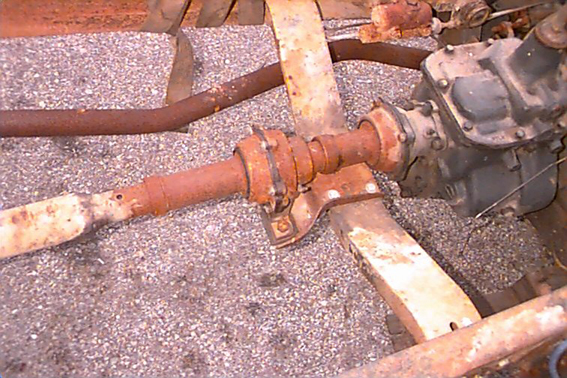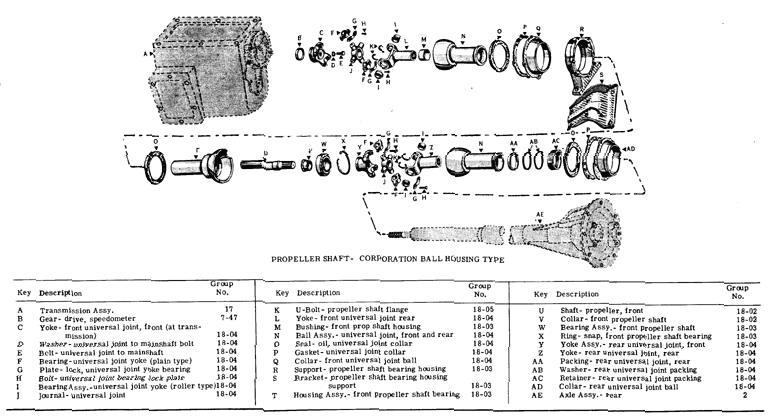Of the many differences between the Chevrolet and GMC 1/2 ton during the early years (1936-54), the GMC offering of a long bed pickup box was one of the more noticeable. Only GMC provided this option. To obtain this extra bed length on a Chevrolet, the buyer ordered a 3/4 ton.
This difference existed with the first GMC pickup in 1936 and continued through the end of the Advance Design series in 1955. Possibly the reasoning for this was the horsepower difference between these two marquis. The base 216 six cylinder Chevrolet engine provided 92 hp. The standard 228 GMC six boasted 100 hp.
To get the approximately nine inch extra GMC chassis length not only were the two frame rails longer but the drive shaft was extended. GMC engineers did this by developing an extension which was the connecting length between the standard short bed closed drive shaft and the rear of the transmission. None of this interchanges with a Chevrolet and both makes use a totally different drive shaft design on their 3/4 ton series.
The adjacent photo shows this unique connector link installed in its GMC. A 7 3/8 inch steel jack-shaft is surrounded by a cast iron housing (it is still a closed drive shaft) and includes an extra u-joint, bearing, and seal. Though, a strongly built drive shaft system, this portion becomes the long bed 1/2 ton's weak link after 50 years of use and abuse. Without a doubt this link has performed almost flawlessly beyond the miles expected by its designers. However, it does have its long term limitations. The many prior miles, lack of regular maintenance, and occasionally overloading the truck makes the failure of an original in today's world a definite possibility. Watch for sources for the rare replacement parts in this connector link just in case. Otherwise surprise damage in this area can keep your GMC 1/2 ton long bed out of service for quite some time.





